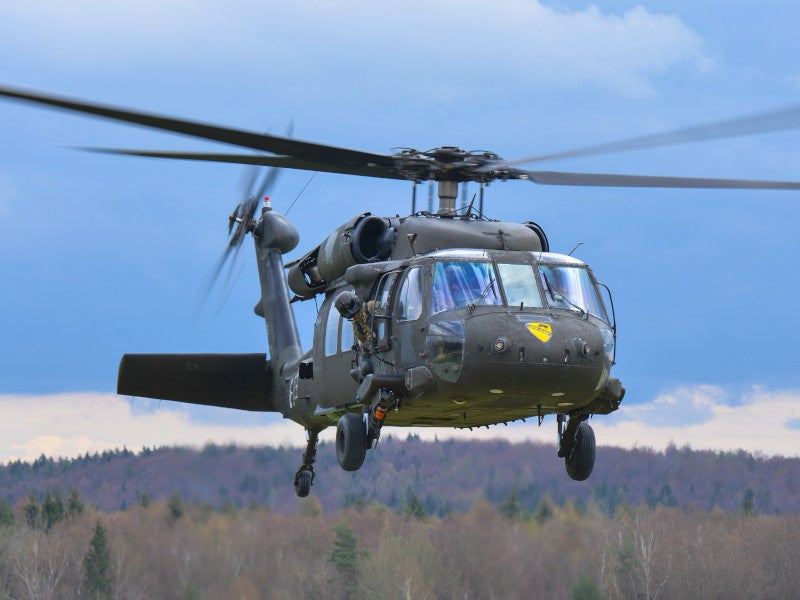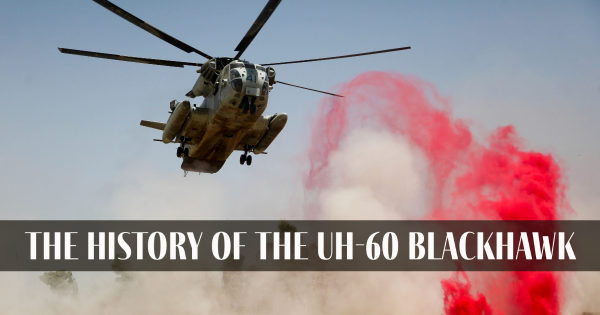Opening Peak Performance: UH 60 Helicopter Upkeep Overview
Opening Peak Performance: UH 60 Helicopter Upkeep Overview
Blog Article
Understanding the Mechanics and Engineering Behind Uh 60 Helicopters
The UH-60 helicopter, frequently recognized as the Black Hawk, stands as a peak of modern-day rotorcraft modern technology, embodying a blend of robust design and intricate mechanics. As we peel back the layers of the UH-60's design, a world of intricate systems and meticulous engineering comes to light.
History of UH-60 Helicopters
The history of UH-60 helicopters traces back to the late 1970s when the United States Military sought a versatile and innovative utility helicopter to replace its aging fleet. In reaction to this demand, the Sikorsky Airplane Company established the UH-60 Black Hawk helicopter. Presented in 1979, the UH-60 swiftly came to be a staple in armed forces operations as a result of its impressive capabilities.
The UH-60 was created to succeed in a variety of missions, consisting of army transport, medical emptying, electronic warfare, and special operations. Its capacity to adjust to different functions made it a beneficial asset to the U.S. uh 60. Military and other military forces around the globe
Over the years, the UH-60 platform has actually undertaken a number of upgrades and variations to improve its efficiency and keep rate with developing goal requirements. These helicopters have actually seen extensive service in conflicts such as the Gulf Battle, Afghanistan, and Iraq, showcasing their integrity and flexibility in varied operational settings. The UH-60's rich background is a testament to its enduring heritage as a premier utility helicopter.

Engine and Power Systems
Making use of advanced propulsion modern technology, UH-60 helicopters are outfitted with innovative engine and power systems to make certain ideal efficiency and dependability in a variety of functional circumstances. The UH-60, typically recognized as the Black Hawk, is powered by 2 General Electric T700-GE-701D engines, each with the ability of providing up to 1,940 shaft horse power. These turboshaft engines supply the required thrust for the helicopter to execute its goals properly, consisting of troop transport, medical evacuation, and combat support.

Blades System and The Rules Of Aerodynamics
How do the rotor system and aerodynamics of UH-60 helicopters add to their functional efficiency and flight capabilities? The rotor system of the UH-60 helicopter plays an important function in supplying lift and propulsion. The UH-60 includes a four-bladed, completely verbalized rotor system that permits high maneuverability and security throughout trip. This style allows the helicopter to carry out a variety of missions, from transportation and clinical emptying to fight operations.
The rules of aerodynamics also play a key duty in the efficiency of UH-60 helicopters. The streamlined body and rotor blade design lower drag, enabling the helicopter to achieve greater speeds and better gas efficiency. The wind resistant style of the UH-60 also adds to its capability to operate in varied ecological conditions, consisting of high altitudes and warm temperature levels.
Avionics and Trip Control Systems

In its complex control with the rotor system and aerodynamics of UH-60 helicopters, the avionics and trip control systems create an essential network of innovations forming the aircraft's operational abilities. In the UH-60, these systems consist of electronic display screens, communication radios, GPS navigation, weather condition radar, and auto-pilot systems.
The trip control systems of the UH-60 are in charge of translating the pilot's inputs into the proper changes to the blades system, ensuring stable flight and maneuverability. These systems include hydraulic actuators, servos, and computer systems that function with each other to regulate the tail and major blades, as well as other flight control surfaces. By precisely managing the helicopter's flight dynamics, these systems enable pilots to perform a wide variety of missions, from transport and search-and-rescue to combat operations, with accuracy and self-confidence.
Duty and Applications in Aeronautics
Avionics systems in UH-60 helicopters include a range of digital systems that help in navigation, interaction, tracking, and regulating various airplane features. These systems include electronic official statement displays, autopilot systems, interaction radios, GPS navigation tools, and weather radar. In addition, these systems incorporate security attributes such as autopilot modes, surface awareness alerting systems, and security augmentation systems to enhance the general security and functional capabilities of the UH-60 helicopters in various objectives, consisting of troop transport, medical emptying, search and rescue, and airborne firefighting.
Conclusion
Finally, the UH-60 helicopter is a flexible airplane with an abundant history and advanced engineering. Its engine and power systems, rotor system, the rules of aerodynamics, avionics, and trip control systems all function together to make it a trustworthy and reliable maker. The UH-60's function and applications in aeronautics are substantial, varying from military operations to search and rescue missions. Its proceeded advancement and use demonstrate its importance in the area of aviation (uh 60).
In its elaborate sychronisation with the rotor system and aerodynamics click to read of UH-60 helicopters, the avionics and flight control systems create an essential network of technologies forming the airplane's functional abilities.The flight control systems of the UH-60 are accountable for translating the pilot's inputs into the ideal changes to the blades system, guaranteeing stable trip and ability to move. Avionics systems in UH-60 helicopters include a variety of electronic systems that help in navigating, communication, monitoring, and regulating different aircraft features. Furthermore, these systems incorporate safety and security attributes such as autopilot settings, surface awareness warning systems, and security augmentation systems to boost the general safety and functional abilities of the UH-60 helicopters in various objectives, including army transport, clinical emptying, search and rescue, and airborne firefighting.
Its engine and power systems, rotor click here for info system, aerodynamics, avionics, and trip control systems all work with each other to make it a dependable and reliable maker.
Report this page